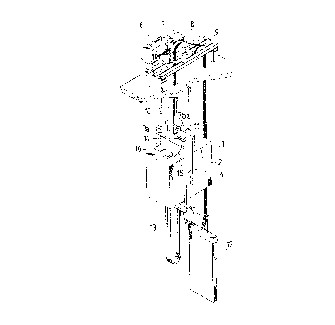Une partie des informations de ce site Web a été fournie par des sources externes. Le gouvernement du Canada n'assume aucune responsabilité concernant la précision, l'actualité ou la fiabilité des informations fournies par les sources externes. Les utilisateurs qui désirent employer cette information devraient consulter directement la source des informations. Le contenu fourni par les sources externes n'est pas assujetti aux exigences sur les langues officielles, la protection des renseignements personnels et l'accessibilité.
L'apparition de différences dans le texte et l'image des Revendications et de l'Abrégé dépend du moment auquel le document est publié. Les textes des Revendications et de l'Abrégé sont affichés :
| (12) Brevet: | (11) CA 2029422 |
|---|---|
| (54) Titre français: | DISPOSITIF DE DONNEES SUR LA CHARGE D'UN ASCENSEUR ET METHODE CONNEXE |
| (54) Titre anglais: | PROCEDURE AND APPARATUS FOR PRODUCING ELEVATOR LOAD DATA |
| Statut: | Périmé et au-delà du délai pour l’annulation |
| (51) Classification internationale des brevets (CIB): |
|
|---|---|
| (72) Inventeurs : |
|
| (73) Titulaires : |
|
| (71) Demandeurs : |
|
| (74) Agent: | G. RONALD BELL & ASSOCIATES |
| (74) Co-agent: | |
| (45) Délivré: | 1998-12-29 |
| (22) Date de dépôt: | 1990-11-07 |
| (41) Mise à la disponibilité du public: | 1991-05-11 |
| Requête d'examen: | 1995-06-14 |
| Licence disponible: | S.O. |
| Cédé au domaine public: | S.O. |
| (25) Langue des documents déposés: | Anglais |
| Traité de coopération en matière de brevets (PCT): | Non |
|---|
| (30) Données de priorité de la demande: | ||||||
|---|---|---|---|---|---|---|
|
Cette invention concerne une procédure et un appareil de production de données sur la charge d'un ascenseur. La procédure fait appel à un ou plusieurs détecteurs de tension placés sur la cabine d'ascenseur ou sur un élément supportant le poids de celle-ci. Au moins un détecteur est placé sur la cabine d'ascenseur à un endroit où la tension exercée par la charge est élevée. D'après les informations fournies par les détecteurs, l'appareil produit un signal de charge de cabine et un autre signal de charge utilisés pour régler le démarrage du moteur de levage en fonction de la position de la cabine d'ascenseur.
Procedure and apparatus for producing elevator
load data. The procedure employs one or more tension
sensing detectors placed on the elevator car unit or on a
member carrying the weight of said unit. At least one
detector is placed on the elevator car unit in a location
where the tension caused by the load is high. Based on the
information obtained from the detectors, a car load signal
and another load signal, used especially in the start
setting of a hoisting motor drive and dependent on the
position of the elevator car unit, are produced.
Note : Les revendications sont présentées dans la langue officielle dans laquelle elles ont été soumises.
Note : Les descriptions sont présentées dans la langue officielle dans laquelle elles ont été soumises.

2024-08-01 : Dans le cadre de la transition vers les Brevets de nouvelle génération (BNG), la base de données sur les brevets canadiens (BDBC) contient désormais un Historique d'événement plus détaillé, qui reproduit le Journal des événements de notre nouvelle solution interne.
Veuillez noter que les événements débutant par « Inactive : » se réfèrent à des événements qui ne sont plus utilisés dans notre nouvelle solution interne.
Pour une meilleure compréhension de l'état de la demande ou brevet qui figure sur cette page, la rubrique Mise en garde , et les descriptions de Brevet , Historique d'événement , Taxes périodiques et Historique des paiements devraient être consultées.
| Description | Date |
|---|---|
| Le délai pour l'annulation est expiré | 2003-11-07 |
| Lettre envoyée | 2002-11-07 |
| Accordé par délivrance | 1998-12-29 |
| Préoctroi | 1998-08-18 |
| Inactive : Taxe finale reçue | 1998-08-18 |
| Un avis d'acceptation est envoyé | 1998-02-25 |
| Lettre envoyée | 1998-02-25 |
| Un avis d'acceptation est envoyé | 1998-02-25 |
| Inactive : Renseign. sur l'état - Complets dès date d'ent. journ. | 1998-02-20 |
| Inactive : Dem. traitée sur TS dès date d'ent. journal | 1998-02-20 |
| Inactive : CIB attribuée | 1998-02-12 |
| Inactive : CIB enlevée | 1998-02-12 |
| Inactive : CIB en 1re position | 1998-02-12 |
| Inactive : Approuvée aux fins d'acceptation (AFA) | 1998-02-03 |
| Exigences pour une requête d'examen - jugée conforme | 1995-06-14 |
| Toutes les exigences pour l'examen - jugée conforme | 1995-06-14 |
| Demande publiée (accessible au public) | 1991-05-11 |
Il n'y a pas d'historique d'abandonnement
Le dernier paiement a été reçu le
Avis : Si le paiement en totalité n'a pas été reçu au plus tard à la date indiquée, une taxe supplémentaire peut être imposée, soit une des taxes suivantes :
Veuillez vous référer à la page web des taxes sur les brevets de l'OPIC pour voir tous les montants actuels des taxes.
| Type de taxes | Anniversaire | Échéance | Date payée |
|---|---|---|---|
| Requête d'examen - générale | 1995-06-14 | ||
| TM (demande, 7e anniv.) - générale | 07 | 1997-11-07 | 1997-10-23 |
| Taxe finale - générale | 1998-08-18 | ||
| TM (demande, 8e anniv.) - générale | 08 | 1998-11-09 | 1998-10-30 |
| TM (brevet, 9e anniv.) - générale | 1999-11-08 | 1999-10-13 | |
| TM (brevet, 10e anniv.) - générale | 2000-11-07 | 2000-10-11 | |
| TM (brevet, 11e anniv.) - générale | 2001-11-07 | 2001-10-15 | |
| TM (demande, 2e anniv.) - générale | 02 | 1992-11-09 |
Les titulaires actuels et antérieures au dossier sont affichés en ordre alphabétique.
| Titulaires actuels au dossier |
|---|
| KONE ELEVATOR GMBH |
| Titulaires antérieures au dossier |
|---|
| HEIKKI MALLINEN |
| PEKKA TORENIUS |